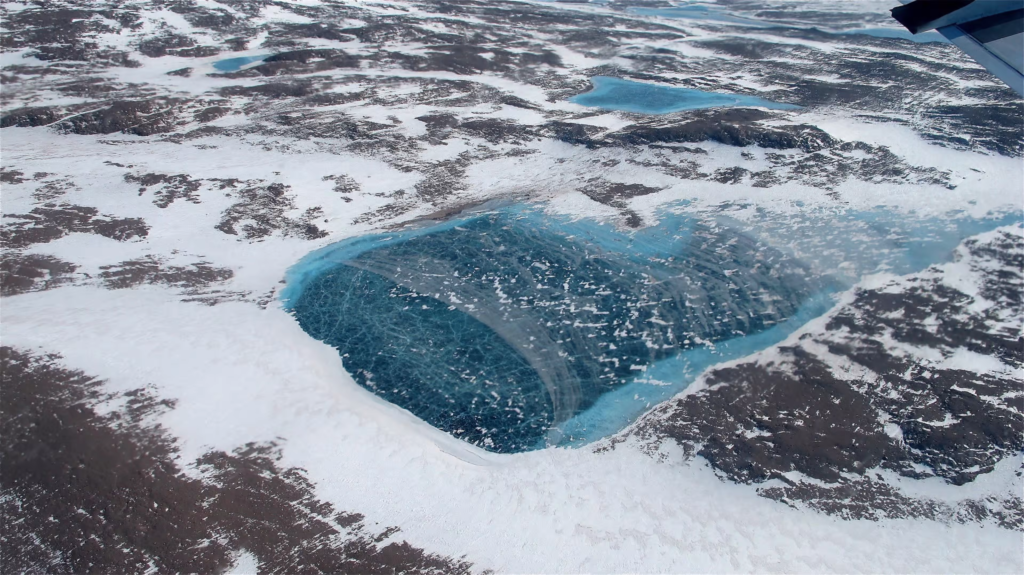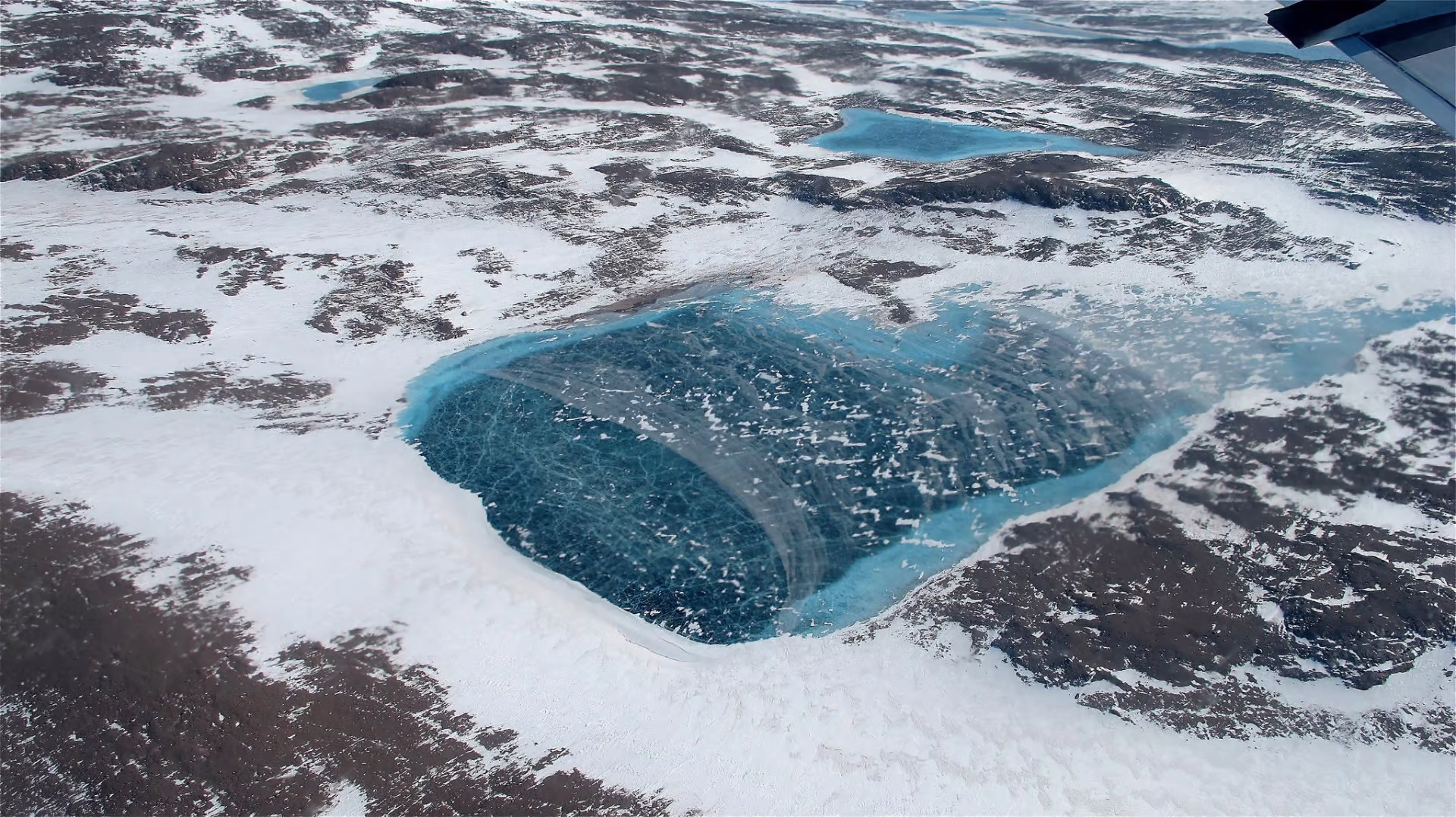The discovery of an underground “city” beneath Greenland’s ice sheet has captured global attention, unveiling a forgotten chapter of Cold War history. In April, NASA scientists made an unexpected finding when radar technology detected remnants of Camp Century, a secret US military installation from the 1960s.
Buried 100 feet below the icy surface, this Cold War relic reflects the strategic ambitions and geopolitical tensions of a bygone era. The rediscovery of Camp Century not only reveals the technological feats of its time but also raises important questions about environmental and geopolitical legacies.
The Birth of Camp Century: An Ambitious Cold War Project
Camp Century was part of a highly secretive military initiative during the height of the Cold War. Commissioned in the late 1950s under President Dwight D. Eisenhower, the base was constructed by the US Army Corps of Engineers in northwestern Greenland.
Officially, it was presented as a scientific research facility, but its true purpose was far more strategic. The project, known internally as “Project Iceworm,” aimed to establish a nuclear missile launch site that could provide the United States with a significant advantage in a potential conflict with the Soviet Union.
The scale and ambition of Camp Century were staggering. Envisioned as a “city under the ice,” the base included over 3,000 miles of tunnels and was designed to accommodate up to 600 nuclear missiles.
Read : Greenland: The Legendary Land of Ice and Adventure
These “Iceman missiles” would be deployed through shafts carved deep into the ice, ready to strike targets in the Soviet Union and Eastern Europe. The base covered an area of 52,000 square miles—three times the size of Denmark, which owns Greenland.
Read : South Korea Plays BTS Songs in Huge Loudspeaker in Cold War Against North Korea
Construction of Camp Century was an engineering marvel. The US Army built extensive tunnels and living quarters beneath the ice, capable of housing 200 personnel.

The facility included laboratories, a hospital, and even a nuclear power plant, making it self-sufficient in the harsh Arctic environment. The project was conducted with the utmost secrecy, and even the Danish government was unaware of its true purpose, believing it to be a purely scientific endeavor.
The Cold War Context: Geopolitical Tensions and Strategic Ambitions
The Cold War was a period of intense rivalry between the United States and the Soviet Union, marked by an arms race and the constant threat of nuclear war. In this context, Greenland’s strategic location made it an ideal site for a military base.
Positioned between North America and Europe, it provided a direct route for missile launches aimed at Soviet targets. Camp Century was part of a broader US strategy to establish a network of missile launch sites that could ensure a rapid and effective response in the event of a nuclear conflict.
The project reflected the technological and military ambitions of the time. The United States and the Soviet Union were locked in a race for dominance, not just in terms of nuclear weapons but also in space exploration and other fields.

Camp Century was a manifestation of this competition, showcasing the lengths to which both sides were willing to go to gain an advantage. The base’s design and construction were a testament to American ingenuity and determination, but they also highlighted the risks and ethical questions associated with such projects.
Despite its ambitious goals, Camp Century faced significant challenges. The harsh Arctic environment made construction and maintenance difficult, and the shifting ice posed a constant threat to the stability of the tunnels.
By 1967, the project was abandoned, and the base was left to be swallowed by the ice. The true nature of Project Iceworm remained a closely guarded secret until 1997, when documents were declassified, revealing the full extent of the plan.
Environmental and Geopolitical Legacies: Lessons from Camp Century
The rediscovery of Camp Century has reignited discussions about the environmental and geopolitical implications of Cold War-era projects. One of the most pressing concerns is the environmental impact of the abandoned base.
When Camp Century was constructed, little consideration was given to the long-term consequences of leaving infrastructure and potentially hazardous materials buried in the ice. As climate change accelerates the melting of Greenland’s ice sheet, there is a risk that contaminants from the base could be released into the environment.
The presence of a nuclear power plant at Camp Century raises particular concerns. Although the reactor was removed when the base was abandoned, other materials, including diesel fuel and wastewater, were left behind.
These could pose a threat to the fragile Arctic ecosystem if they are exposed by melting ice. The situation serves as a reminder of the need for careful stewardship of the environment, especially in remote and sensitive regions like the Arctic.

Geopolitically, the discovery of Camp Century highlights the enduring legacy of Cold War tensions. The base was built without the knowledge or consent of the Danish government, raising questions about sovereignty and the ethical considerations of military projects.
Today, Greenland is a semi-autonomous territory within the Kingdom of Denmark, and its strategic importance has only grown. The Arctic is becoming an increasingly contested region, with countries vying for control over its resources and shipping routes. The history of Camp Century serves as a cautionary tale about the complexities of Arctic geopolitics and the need for international cooperation.
The rediscovery also underscores the role of technology in uncovering hidden histories. NASA’s use of advanced radar technology to detect the remnants of Camp Century demonstrates how modern tools can shed light on the past.
It is a powerful reminder of how much remains to be discovered, even in seemingly remote and inhospitable places. The findings have sparked interest among historians, scientists, and policymakers, who see Camp Century as a symbol of both human ambition and the unintended consequences of our actions.
A Forgotten Chapter Unearthed
Camp Century represents a fascinating and complex chapter in Cold War history. Its rediscovery beneath Greenland’s ice is more than just a scientific curiosity; it is a reminder of the geopolitical tensions and technological ambitions that defined an era.

The base’s construction and abandonment raise important questions about environmental responsibility, sovereignty, and the ethical implications of military projects. As the Arctic becomes an increasingly important region in global geopolitics, the lessons of Camp Century are more relevant than ever.
The story of Camp Century is a testament to human ingenuity and the lengths to which nations will go to secure strategic advantages. It also serves as a cautionary tale about the long-term consequences of our actions, particularly in fragile environments.
As we continue to explore and uncover the hidden histories of our world, the legacy of Camp Century will remain a powerful reminder of the complexities and challenges of the modern age.

